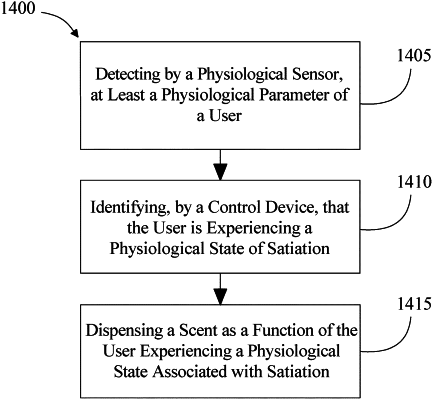| CPC G16H 20/60 (2018.01) [A61L 9/12 (2013.01); G16H 40/63 (2018.01); A61L 2209/111 (2013.01); A61L 2209/134 (2013.01); A61M 21/00 (2013.01)] | 20 Claims |

|
1. A system for inducing a Pavlovian conditioned association of an aroma with a state of satiation, the system comprising:
at least a physiological sensor, wherein the at least a physiological sensor is configured to detect at least a physiological parameter of a user, and to transmit a detection signal;
a control device configured to receive the detection signal from the at least a physiological sensor, wherein the control device is further configured to:
receive training data correlating physiological sensor data to several distinct states of the user; and
train a machine-learning model with the training data, wherein the machine-learning model is configured to receive the physiological parameter and output a distinct state of the user, and wherein the machine-learning model is configured to sample the physiological sensor data in real-time to output a determination of the user's behavioral engagement; and
ascertain that the user is experiencing a physiological state associated with satiation as a function of the machine-learning model, and transmit the detection signal to an automatically activated scent diffuser, thereby conditioning the user to associate said scent with satiation; and
the automatically activated scent diffuser, wherein the scent diffuser is configured to automatically activate upon receiving the detection signal, wherein automatically activating further comprises diffusing a scent in response to the detection signal.
|